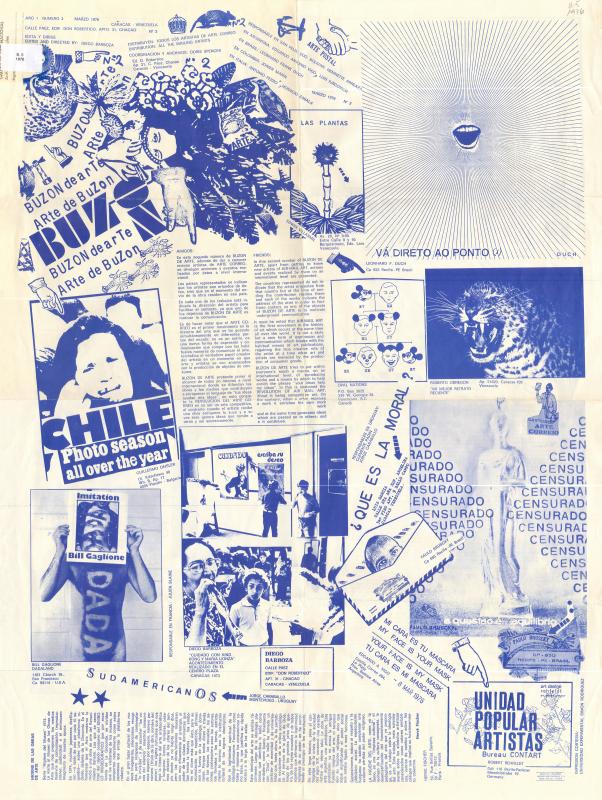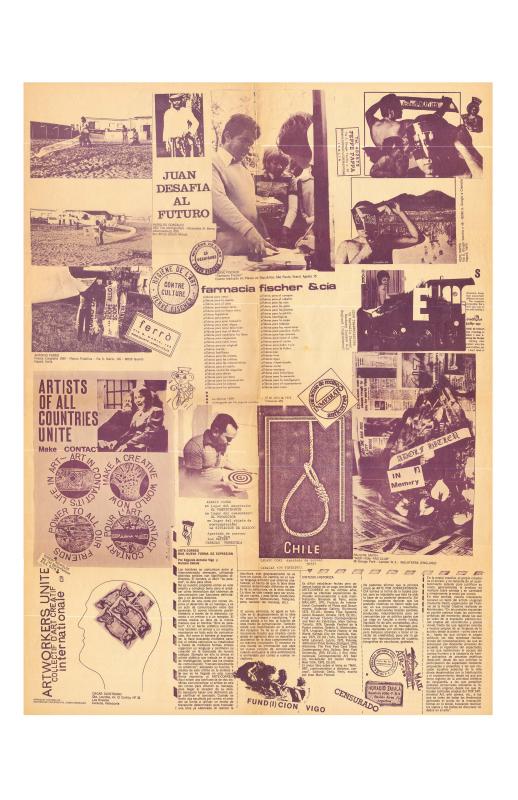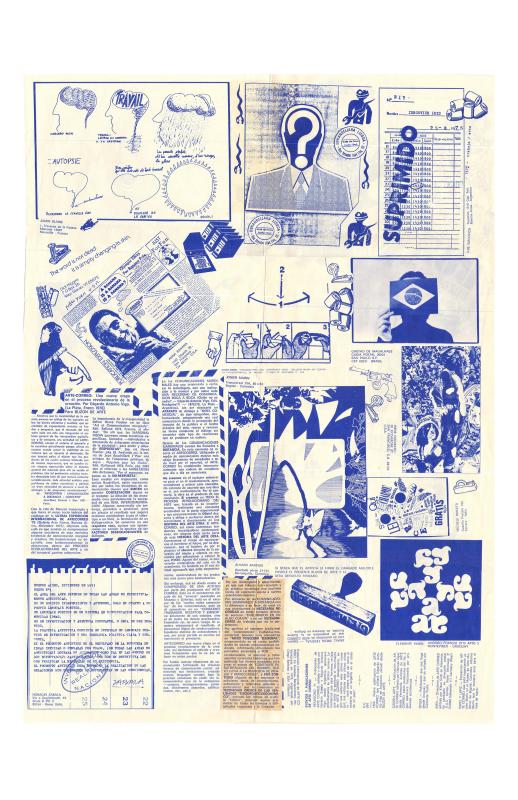Buzón de Arte/Arte de Buzón, the Venezuelan bilingual (Spanish-English) (tabloid) magazine, managed and edited by the artist Diego Barboza (1945–2003), appeared just twice: in January and March (Caracas, 1976). On the editorial page in this document (the first issue of the magazine) Barboza explains the publication’s goal of providing space for non-commercial forms of art that promote wider communication expressed in creative languages. He mentions having received so many different examples that have “suggested the idea of publishing issues focused on a single theme.” Unfortunately, that idea never came to fruition.
Venezuelan contributors to this issue of the magazine were Dámaso Ogaz, Oscar Sjostrand, Alexis Yánez, and Barboza. Others included Clemente Padín and Jorge Caraballo (Uruguay); Klaus Groh, Roger Steinweg, and Robert Rehfeldt (Germany); Peter van Beveren (Holland); Edgardo Antonio Vigo and Horacio Zabala (Argentina); Haroldo González (South Africa); Herve Fischer (Brazil); Antonio Ferro and Peppe Pappa (Italy); the Coum Transmissions group and Pauline Smith (England). Each contribution is signed and includes the artist’s address, a key feature in works of this kind.
[See in the ICAA digital archive Barboza’s “Amigos” editorial (doc. no. 1102014), published in the second issue of the magazine Buzón de Arte/Arte de Buzón (Caracas, March 1976)].
The anthological nature of Buzón de Arte/Arte de Buzón gives it an undeniable importance from a conceptual and visual perspective, since it is a relic of the golden age of mail art. Artists such as the Argentinean Vigo published lengthy articles in both issues [see: “Arte-correo: una nueva forma de expresión” in the first issue (jointly produced with Zabala) (doc. no. 1154763); and “Arte-correo: una nueva etapa en el proceso revolucionario de la creación,” in the second (doc. no. 1102031)]. The publication of the two issues of this magazine was one of the most significant editorial, artistic, and communications undertakings in Venezuela in the 1970s; the product of Barboza’s talent and social conscience. It documents the political importance of mail art in the mid-1970s, when it was an avant-garde artistic variation on the theme of communication.



